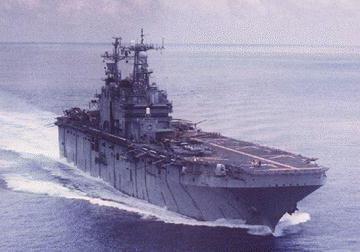

103: OPERATIONS FUNDAMENTALS
103.1 List the effects of the following weather phenomena on flight operations:
a. Lighting and electrostatic discharge
Lighting can do severe structural damage to aircraft, as well as damage to electrical systems including instruments, avionics, and radar. Lighting also poses a threat to pilots and crew, some of these effects are flash blindness, hearing loss from shock waves. Some aircrews have experienced mild electrical shock and minor burns. Aircraft build up static electricity as they fly through clouds and precipitation, as well as solid particles such as dust, haze and ice. The larger and faster the aircraft the greater the charge it generates. These discharges usually cause only minor physical damage and indirectly affects some electrical circuits.
b. Hail
Hail is one of the worst hazards of thunderstorm flying, it occurs during the mature stages of cells having a strong updraft. The larger a storm the more likely it is to have hail. Hail is not only found inside of storms, it has been encountered as high as 45,000 ft and in clear air and maybe carried up to 10 miles downwind of the storm core. Hail can occur anywhere in a thunderstorm, but it is usually found beneath the anvil of a large cumulonimbus.
c. Icing
Icing should be expected where temperatures are at or below freezing. Temperature ranges for icing are 0 c to –40 c and 0 c to –10 c is where the most severe icing occurs. Since the freezing level is also the zone where heavy rainfall and turbulence most frequently occur, this particular altitude appears to be the most hazardous. Sever damage to the structure is possible due to decreases in lift and increases weight.
d. Turbulence
Thermal & Mechanical; Thermal is caused by wind shear produced by surface heat raising aircraft. Mechanical is effect of wind shear caused by physical features, aircraft can go up or down.
e. Fog/stratus
Stratus clouds and fog occur at or near the surface and can seriously restrict visibility at low levels. For this reason aircraft operations can be delayed, particularly for landings and takeoffs. Fog and stratus are significant to the pilot, which limits them flying under VFR rules, because ceilings and visibility are generally very low to permit navigation by visual references.
103.2 State the weather criteria for the following launch/recovery conditions for fixed-wing and helicopters:
a. Case 1
Advisory control – aircraft will not encounter instrument meteorlogical condition. FW – 3,000’ ceiling/5 statue miles visibility; Helo – 1,000’ ceiling/3 statue miles visibility.
b. Case 2
Positive control – aircraft may encounter IMC on depart/recovery. FW – below Case 1 but not less than 1,000’ ceiling/5 statue miles visibility; Helo – below Case 1 but not less than 500’ ceiling/1 statue mile visibility.
c. Case 3
Positive control overall – anticipated the aircraft will encounter IMC on depart/recovery. FW – below Case 2 and 30 minutes after sunset to 30 minutes before sunrise; Helo – below Case 2 however with a visible horizon helicopters may work in the tower DLQ pattern.
103.3 Explain the function of the plane guard helicopter.
During most flight operations, a dedicated SAR helo remains in starboard delta pattern to respond in case a rescue is required.
103.4 Discuss the following Helicopter Direction Center (HDC) positions:
a. Approach control
Assumes control of inbouund aircraft from the Marshall controller. Passes control of aircraft to final controller when the aircraft reaches approximately 6 miles inbound.
b. Marshal control
Flights entering helicopter direction control zone are normally turned over to the marshall controller for further clearance to the marshall pattern.
c. Assault control
Responsible for for same as Departure control and controls aircraft conducting airborne ship to shore movement of troops and supplies during amphibious operations.
d. Departure control
Normally exercises advisory control, with a shift to close control as required by weather conditions, upon request, or when the assigned departure is not adhered to.
e. Final control
Responsible for controlling aircraft on final approach until pilot reports see you or meatball, or reaches approach minimums.
103.5 State the frequency ranges and function of the following:
a. High Frequency (HF)
3 MHZ – 30 MHZ (3000 – 30,000 Khz), long range communication.
b. Very High Frequency (VHF)
30 MHZ – 300 MHZ, Line of site communication (i.e. ship to ship).
c. Ultra High Frequency (UHF)
300 MHZ – 3000 MHZ (3 GHZ), Line of site communication (i.e. ship to military aircraft).
103.6 State the effects of Emission Control (EMCON) on aviation operations.
Positive comms control of aircraft is waived and radio transmissions between aircraft and ship board control are held to the minimum necessary for safety of flight.
103.7 State the purpose of the air plan.
To publish flight operations for the next 24 hours.
103.8 State the purpose of the Unmanned Aerial Vehicle (UAV).
Provides operational forces with a means to provide target acquisition, strike control, and damage assessment for battle and surface action groups through reconnaisance and surveillance.
kimberly.a.king@navy.mil
AZC(AW/NAC) Kimberly King
